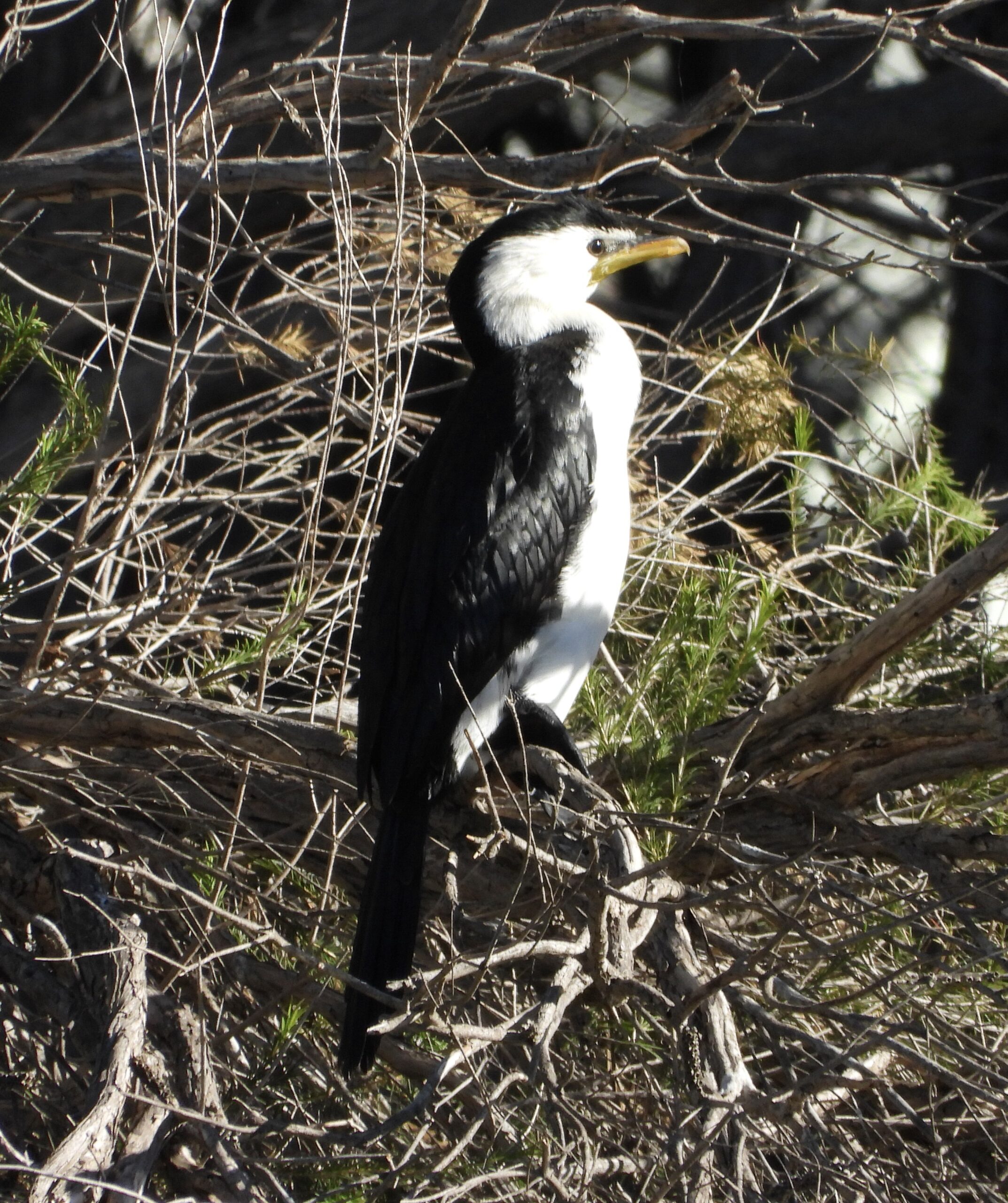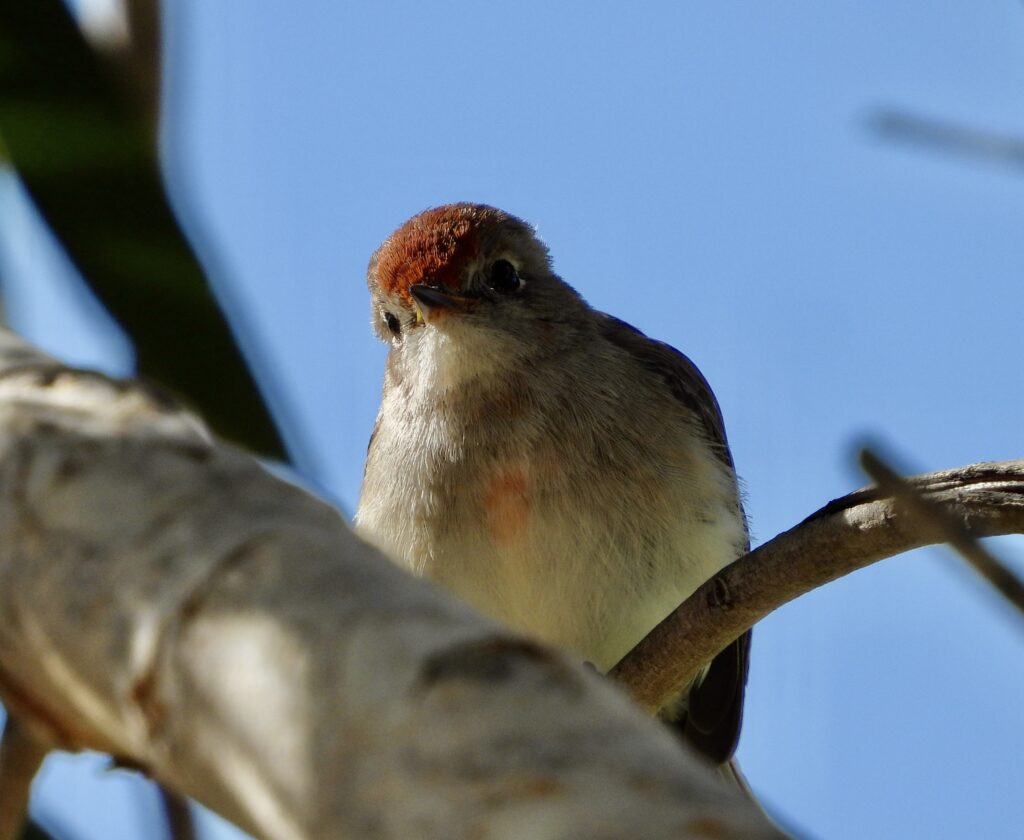Darling Range Branch, 24 May 2025
Though we had early misgivings about the weather – cold start, chance of rain – the morning turned out to be perfect for birdwatching in this beautiful wetland reserve in High Wycombe. Our party consisted of nine members from the DRB and Main Club plus six visitors, all of whom seemed to have at least some experience of birdwatching.
Since the reserve boasts two distinct ecosystems and vegetation types (a large lake with extensive reed beds plus stands of paperbarks and eucalypts) the large number of bird species seen by the group (35) is not all that surprising. But that large number made for exciting viewing for the watchers, a number of whom saw species they had never seen before. Among a couple of dozen Pacific Black Ducks (Anas superciliosa) on the water was a lonely Hardhead (Aythya australis), a pair of Australian Wood Ducks (Chenonetta jubata) and an Australian Grebe (Tachybaptus novaehollandiae). On the far bank was a fine pair of Australian Shelducks (Tadorna tadornoides) along with some odd-looking ducks that nobody was sure about – some hybrid, we wondered. Also in full view was a perfect specimen of a male Australasian Darter (Anhinga novaehollandiae) and a Little Pied Cormorant (Microcarbo melanoleucos), both sitting on dead branches of a tree. The pair of Black Swans (Cygnus atratus) who ever-so-serenely swam by was also a great hit.


We noticed that many of the birds were fairly tame and came close to us on the shore. We presume this is the result of members of the public feeding the birds, a practice we strongly deprecate. As might be expected, the smaller birds in the treetops were more of a challenge for many – they’re small, they’re quick, they’re against the sun, and leaves hide them.
All the same, we saw a good variety, including Brown Honeyeater (Lichmera indistincta), White-cheeked Honeyeater (Phylidonyris niger), Grey Fantail (Rhipidura albiscapa), while a Western Gerygone (Gerygone fusca) was clearly heard but not seen. Insects are plenty above the lake, attracting dozens of Welcome Swallows (Hirundo neoxena) and Tree Martins (Petrochelidon nigricans), but which was which? It took a little while, but in the end, just about everyone was confident in identifying these fast-flying birds – pale rump for the Tree Martin, forked tail and orange face/chest for the Welcome Swallow.
Perhaps the surprise of the morning was a small brown bird with a red cap and a red blush on the chest – yes, a female Red-capped Robin (Petroica goodenovii). She wasn’t too bothered by people, apparently, and many of us had a clear view.
Female Red-capped Robin – Image by Rachel Green

Another bird of interest, since the books say it migrates north for winter, was the Australian Reed-Warbler (Acrocephalus australis). It called a little, and one member snapped a good photograph. A fly-past of about 30 domestic homing pigeons (Columba livia) was a wonder to some.
Ollie Worrell Reserve is an excellent place for birdwatching – do go there if you can!
Mike Green

